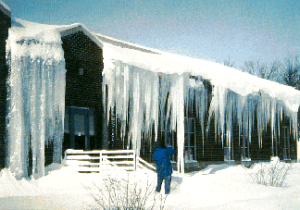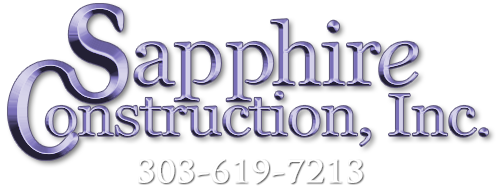
Why Colorado Outbuildings Need Proper Snow Load Design
Colorado outbuildings undoubtedly withstand heavy winter weather stresses. Successful building design must account for large accumulations of snow and ice during colder months. Referred to as “snow load,” one cubic foot of snow weighs about 10 pounds and ice can weigh much more. Excess snow accumulation combined with refrozen snow melt or ice is one of the biggest threats to structures.
Agricultural buildings in Colorado are some of the most vulnerable to collapse. Sapphire Construction, Inc. has teamed up with Lester Buildings to offer Colorado buyers superior engineering and quality components that address the problem of snow load.

Four types of load can be ascertained by engineers and designers. The first three are measurable quantities. The last is more difficult to ascertain. Four stress factors considered by the engineers at Lester Buildings and Sapphire Construction include:
- Gravity loads or “dead” loads caused by the weight of the structure
- Load superimposed because of the use and occupancy, or ”live” load
- Objects on the roof or hanging from the roof – “collateral” loads
- Nature’s “environmental” loads such as snow, wind, and earthquakes
Snow Load Capacities of Colorado Outbuildings
Pole barns, steel buildings, corrals, and various types of structures along the Front Range must be built to withstand extremes. Non-commercial agricultural buildings require snow capacities ranging from 12 to 40 pounds per square foot. There are local building codes in the area between Denver and Castle Rock and establish minimum standards for snow in commercial buildings.
Going a step further, engineers at Lester Buildings look at many factors to establish the proper snow and wind load capacity for buildings along the Front Range. They consider the type of building, primary use, expected snow accumulation, exact location of buildings, and the surrounding area. They also look at the customers’ preferred designs — roof lines, the peaks, valleys, and dormers – all places that collect snow. (To be continued)
Contact Sapphire Construction, Inc.
Sapphire Construction uses time-tested materials from Lester Buildings, a company with a decades-long reputation for high quality. Ask us about post-frame buildings, metal buildings and pole barns for Farm & Ranch Buildings, Storage, Outbuildings, Hobby Buildings, Livestock Buildings, Equine Buildings, and Commercial Buildings that will stand up under decades of Colorado weather.
FEB
2015

About the Author:
Allen Randa is a second generation Master Carpenter and Owner of Sapphire Construction Inc. Allen personally manages each project from beginning to end. That includes the first meeting, the estimate, the contract and architectural designs.